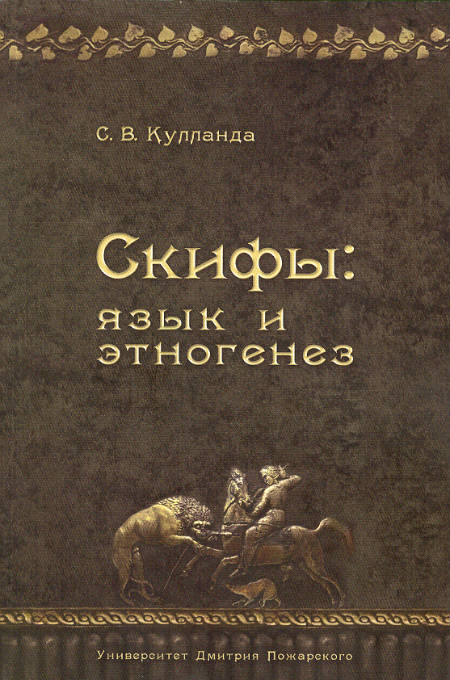Книга
 Скифы : язык и этногенез
Скифы : язык и этногенез
Кулланда Сергей Всеволодович
Ответственный редактор: Якубович Илья Сергеевич
Москва, 2016, 232 стр.
В книге под историческим и этнокультурным углом зрения рассматриваются дошедшие до нас в иноязычных передачах остатки скифского языка, вычленяется слой исконной лексики и определяется его принадлежность, отождествляются заимствования в скифском и скифские заимствования в иных языках. Полученные сведения позволяют четко отделить скифов от соседних восточных иранцев, прежде всего сармат, выявить их языковые контакты с различными, в том числе и неиндоевропейскими этносами, а заодно дают пищу для размышлений относительно сюжетов, выходящих за рамки скифологии, вроде проблем формирования Младшей Авесты или греческой исторической фонетики. Автором составлен глоссарий скифских слов, в котором предлагается ряд новых этимологий скифских и общеиранских лексем. Книга посвящается памяти Надежды Николаевны и Марии Николаевны Погребовых.
English version
The author in his book analyses the extant remnants of the Scythian language preserved by various ancient traditions and modern tongues from the historical and ethno cultural angles. Chapter I Scythian prehistory outlines the prehistory of Indo-Iranians and Iranians from the evidence of historical linguistics and written sources. Chapter II Scythian culture and language deals primarily with the analysis of the archaeological data and written sources pertaining to Scythian history. The major part of the chapter consists of a comprehensive Glossary of the Scythian word-stock underlying further study. Chapter III Scythian history from the linguistic data focuses on the use of linguistic materials for the study of Scythian ethno cultural history. It is argued that, despite the scarcity of the relevant data, a fairly adequate description of Scythian phonetics and linguistic contacts with other languages can be achieved. Judging by regular phonetic correspondences, Scythian belonged to the Southeast branch of Iranian languages, together with Bactrian and Pashto, and differed markedly from Sarmatian. The Scythes whose Eastern Iranian language was by no means akin to that of the Sarmatians migrated from the Aral Sea area first to Ciscaucasia and then to the North Pontic region. There they encountered the speakers of yet unidentified Indo-European and non-Indo-European languages and partially adopted their onomasticon, theonyms, and names of some realia. This fact implies the assimilation of foreign elements in the course of Scythian ethno genesis. On the other hand, Scythian loanwords can be tentatively detected in East Caucasian, Avestan, Median, and Thracian. The book is supplied with an appendix being a description of early Scythian archaeological sites. The work is dedicated to the memory of Nadezhda N. Pogrebova and Mariya N. Pogrebova.


